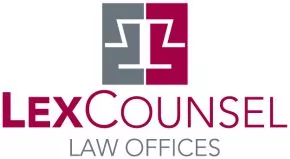Introduction
A Virtual Digital Asset (hereinafter referred to as "VDA") has been defined as any information or code or number or token (not being Indian currency or foreign currency), generated through cryptographic means or otherwise, by whatever name called, providing a digital representation of value exchanged with or without consideration, with the promise or representation of having inherent value, or functions as a store of value or a unit of account including its use in any financial transaction or investment, but not limited to investment scheme, and can be transferred, stored or traded electronically (refer section 3(c) of the Finance Act, 2022 ("2022 Act") and the recently published "Guidelines for Virtual Digital Assets and Linked Services" ("ASCI Guidelines") by the Advertising Standards Council of India ["ASCI"]1). Such VDAs include "crypto products" and non-fungible tokens (NFTs) (refer our articles in relation to NFTs here2 and cryptocurrencies here 3).
Tax Implications under the Finance Act, 2022
The amended Finance Bill, 2022 on March 30, 2022 has received the assent of the President and section 28 of the resulting 2022 Act4 has inserted section 115BBH into the Income Tax Act, 1961 (with effect from April 1, 2023) stipulating that:
- the income in cryptocurrencies/VDAs will be taxed at 30%
(thirty per cent). This tax rate imposed on cryptocurrencies/VDAs
is intentionally higher than the tax rates imposed on stocks and
mutual funds and it appears that the investors will need to pay the
stipulated tax on VDA income irrespective of their tax slab
including when the taxpayer's total income is below the taxable
threshold limits;
- no deductions in respect of any expenditure (other than the
cost of acquisition), allowance or set off against any loss shall
be allowed to the taxpayer in computing the VDA/cryptocurrency
income;
- the losses incurred on transfer of VDAs cannot be set off against under "any provision" of the Income Tax Act, 1961 and therefore, unlike other asset classes, investors will not be allowed to set-off losses incurred against the transfer of VDAs/cryptocurrencies. Furthermore, VDA losses shall not be allowed to be carried forward to succeeding assessment years.
Furthermore, an obligation of deduction of tax has been imposed and section 194S has been inserted into the Income Tax Act, 1961 (with effect from July 1, 2022) stipulating that any person responsible for paying to any resident any sum by way of consideration for transfer of a VDA, shall, at the time of credit of such sum to the account of the resident or at the time of payment of such sum by any mode, whichever is earlier, deduct an amount equal to 1% (one per cent) of such sum as income-tax ("TDS"). However, no TDS shall be deducted in the case where:
- the consideration is payable by a "specified
person"5 and the value or aggregate value of such
consideration does not exceed INR 50,000 during the financial year;
or
- the consideration is payable by any person other than a Specified Person and the value or aggregate value of such consideration does not exceed INR 10,000 during the financial year.
Guidelines for Advertisement of VDAs and Linked Services
In the recently published ASCI Guidelines, the ASCI emphasises on the need to protect consumer/investor interests as investors may not be aware of risks arising from VDA trading and investment. Therefore, the advertisements must comply with the ASCI Guidelines, so that they do not violate Chapter 1 of the ASCI Code, which require the advertisements to be truthful, must not mislead consumers by implication, ambiguity, exaggeration or omission, and must not be framed in a way that abuse their trust or exploit their lack of knowledge.
The ASCI Guidelines will be applicable to all advertisements released or published on or after April 1, 2022, and the advertisers and media owners would need to ensure that all earlier advertisements must not appear in the public domain unless they comply with the ASCI Guidelines, post April 15, 2022.
Some of the key features of the ASCI Guidelines are:
- All ads for VDA products and VDA exchanges, or featuring VDAs,
must carry the following disclaimer:
"Crypto products and NFTs are unregulated and can be highly risky. There may be no regulatory recourse for any loss from such transactions."
Such a disclaimer must be made in the following manner so that it is prominent and unmissable by an average consumer:
- In print or static forms, equal to at least 1/5th of the
advertising space at the bottom of the advertisement in an
easy-to-read font, against a plain background, and to the maximum
font size afforded by the space.
- In video forms, the disclaimer should be placed at the end of
the advertisement against a plain background. A voice over must
accompany the disclaimer in text. The voiceover should be at a
normal speaking pace and must not be hurried. In the case of long
format video of over two minutes, the said disclaimer should be
repeated at the beginning and at the end of the video. The
disclaimer must remain on screen for a minimum of five
seconds.
- In audio forms, the disclaimer must be spoken at the end of the
advertisement. The voiceover should be at a normal speaking pace
and must not be hurried. In the case of long format audio of over
90 seconds, the said disclaimer should be repeated at the beginning
and at the end of the audio.
- In social media posts, such a disclaimer must be carried in
both - the caption as well as any picture or video attachments. The
disclaimer within the caption must be placed upfront at the
beginning of the post. Where social media posts. or advertisements
have restrictions on text in the static picture, the disclaimer
must be carried upfront in the caption before the fold.
- In disappearing stories or posts unaccompanied by text, the
said disclaimer will need to be voiced at the end of the story in
the manner laid out in points (a) or (b) above. If the video is 15
seconds or lesser, then the disclaimer may be carried in a
prominent and visible manner as an overlay.
- In formats where there is a limit on characters, the following
shortened disclaimer must be used "Crypto products and
NFT's are unregulated and risky" followed by a link to the
full disclaimer.
- The disclaimer must be made in the dominant language of the
advertisement.
- In addition to the above, all disclaimers must meet the minimum
requirements laid down in the ASCI guidelines for
disclaimers."
- The words "currency", "securities",
"custodian" and "depositories" may not be used
in advertisements of VDA products or services as consumers
associate these terms with regulated products.
- The information contained in advertisements shall not
contradict the information or warnings that the regulated entities
provide to customers in the marketing of VDA products from time to
time.
- Information on past performance shall not be provided in any
partial or biased manner. Returns for periods of less than 12
months shall not be included.
- Every advertisement for VDA products must clearly give out the
name of the advertiser and provide an easy way to contact them
(phone number or email). This information should be presented in a
manner that is easily understood by the average consumer.
- No advertisement shall contain statements that promise or
guarantee future increase in profits.
- Since this is a risky category, celebrities or prominent personalities who appear in VDA advertisements must take special care to ensure that they have done their due diligence about the statements and claims made in the advertisement, so as not to mislead consumers.
Conclusion
Although VDAs have been around for a while in India and popular among young investors, their legality and legal status, taxation, framework regulations, acceptability etc. have been ambiguous, largely unregulated and questionable. While no legal framework has still been notified, the introduction of "Cryptocurrency and Regulation of Official Digital Currency Bill, 2021" in the Lok Sabha (but its subsequent withdrawal) coupled with the VDA taxation regime under the 2022 Act and the advertisement regulations under the ASCI Guidelines have given impetus to speculations that VDAs will be regulated as an asset class (not being Indian currency) but not banned completely by the Indian regulatory authorities (as was being feared earlier).
Implementation of the VDA tax regime under the 2022 Act prior to the enactment of a VDA governing legislation is understandable considering the concerns surrounding the rapid expansion of VDAs globally which inter alia resulted in issues surrounding illegal activities such as tax evasion, money laundering, misrepresentations and fraudulent activities against the investors. In relation to the ASCI Guidelines, it is observed that even though the ASCI is a self-regulatory body with a non-statutory status, the judicial bodies across India have referred to ASCI's recommendations with seriousness. Therefore, it is expected that the ASCI Guidelines read with the penalties prescribed under the Consumer Protection Act, 2019 will bring about some clarity vis-à-vis the promotion and marketing of unregulated VDAs to protect the unsuspecting investors.
Footnotes
1. Guidelines for advertising of Virtual Digital Assets and linked services (https://ascionline.in/images/pdf/vda-guidelines-23.02.22.pdf)
2. Feasibility Of Non-Fungible Tokens In Anticipation Of The Cryptocurrency Bill, 2021 (https://www.mondaq.com/india/fin-tech/1140784/feasibility-of-non-fungible-tokens-in-anticipation-of-the-cryptocurrency-bill-2021)
3. The Proposed Prohibition of Cryptocurrency in India (https://www.mondaq.com/india/fin-tech/1036746/the-proposed-prohibition-of-cryptocurrency-in-india)
4. https://egazette.nic.in/WriteReadData/2022/234693.pdf
5. "Specified Person" means a person:
- being an individual or a Hindu undivided family, whose
total sales, gross receipts or turnover from the business carried
on by him or profession exercised by him does not exceed INR
1,00,00,000 (one crore rupees) in case of business or INR 50,00,000
(fifty lakh rupees) in case of profession, during the financial
year immediately preceding the financial year in which such VDA is
transferred;
- being an individual or a Hindu undivided family, not having any income under the head "Profits and gains of business or profession".
Disclaimer: LexCounsel provides this e-update on a complimentary basis solely for informational purposes. It is not intended to constitute, and should not be taken as, legal advice, or a communication intended to solicit or establish any attorney-client relationship between LexCounsel and the reader(s). LexCounsel shall not have any obligations or liabilities towards any acts or omission of any reader(s) consequent to any information contained in this e-newsletter. The readers are advised to consult competent professionals in their own judgment before acting on the basis of any information provided hereby.


